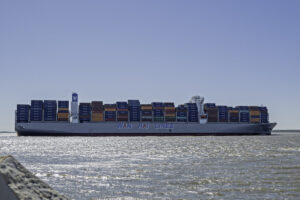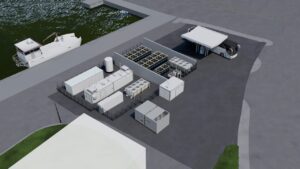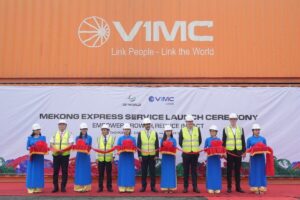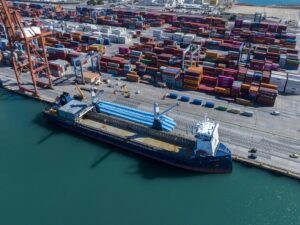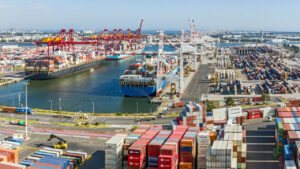Bharat Mumbai Container Terminals (BMCT), part of India’s largest container gateway and an owned subsidiary of PSA International (PSA), has started preparing for operations by ordering a further 18 Konecranes Noell Rubber Tired Gantry (RTG) cranes.
The RTGs will ensure that the fourth and deepest terminal at Jawaharlal Nehru Port (JNP) in Maharashtra will be able to handle the country's ever-increasing demand for container handling capacity after phase one of BMCT is completed at the start of 2018.
This order follows upon an initial order for 18 RTG and four rail mounted gantry (RMG) cranes that will be delivered in two lots, with nine RTGs arriving by August 2018 and the remaining nine by the end of 2018.
BMCT will operate a total of 36 Konecranes Noell RTG cranes and four Konecranes Noell RMG cranes to support the large super post-panamax vessels that will be berthing at the terminal's 2,000-metre quay.
The new equipment will ensure that JNP is able to serve important industrial and manufacturing centres and cities in Northwest India, as well as India’s largest hinterland with a population of more than 400 million.
This means that BMCT can take full advantage of connections to major highways and rail networks that link to key markets in Maharashtra, Gujarat, and the National Capital Region of India.
BMCT is expected to boost export and import trade and increase economic activities between India and other countries.
Its yard will be able to handle double-stack container trains up to 1.5 kilometres long.
Learn more about Konecranes' container lifting equipment
Capt Suresh Amirapu, CEO of BMCT, said: “These RMG cranes are equipped with a rotating trolley that gives the crane operator an excellent view of the containers, rail wagons and the entire working area.
“They also have double-sided cantilevers that cover two truck lanes on either side of the crane rails.
“These will allow us to flexibly manage the rail operations and speed up the rail container handling.”
With power generated by the terminal’s mains, the RMG cranes will not create any local exhaust emissions while running in BMCT’s railyard.
The RMG cranes have a 37.6-metre span covering six rail tracks and offering a maximum lifting capacity of 65 tons.
This allows containers to be stacked one-over-three with a lifting height of 12.5 metres.
Read about terminal handling performance in Konecranes' research paper, 'Automation and Electric Drives', written by Dr-Ing Armin Wieschemann, Senior Director of Global System Development
With a lifting capacity of 40 tons, the RTGs will stack containers one-over-five, covering six container rows plus track lane.
The RTG's diesel generators will be able to power variable speed engines that can reduce fuel consumption by up to one-third depending upon operating conditions.
Shyam Pathak, Sales Director India, Konecranes, Port Solutions, said: “BMCT’s expansion plans are on track and I’m pleased that this dynamic container terminal, backed by the leading global port operator PSA, has again selected our crane technology.”


